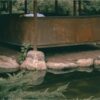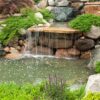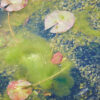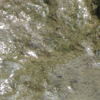Have you been thinking about sprucing up your backyard for quite some time but cannot figure out the what and the how? Well, here’s some food for thought: invest in a pond. It might sound like a lot of work at first, but, trust me, the resulting satisfaction is worth the effort.
Imagine stepping out onto your backyard after a particularly challenging day, a steaming cup of coffee in hand, and the sight of an exquisite water body greeting you. It will be home to several small animals and surrounded by rare species of plants. All your stress will melt away in minutes. Moreover, looking after the pond will make for a great hobby, similar to caring for your plants yet unique. It will also be a fabulous attraction for visitors and guests to admire! Can you think of people’s faces lighting up with pleasant surprise and how gratifying it will be?
As far as the process of installing an artificial pond goes, this article will get you up to speed on the basics. So, if you had already made up your mind before arriving here and are doing the necessary research or if you are someone who is still contemplating the decision, read along to learn more.
Types of artificial ponds
Let’s start with the basics. Before estimating the cost and starting a things-needed list for your backyard pond, you need to decide on the type, and there are several options to choose from.
Fish ponds

The most popular type of artificial ponds is a fish pond since it can house exotic species of fish all around the year. A fish pond will bring you unmatched joy if you love keeping aquariums. You might have noticed that people commonly go for koi or goldfish ponds because of their fantastic aesthetic that instantly uplifts a space. Another reason is that they are relatively easier to look after. There is no hard and fast rule; you can build a pond for your favorite fish as long as you learn about its habitat and maintain the pond’s environment accordingly. Fish ponds need efficient upkeep to maintain suitable waters for the fish to flourish. This means that you will be required to invest in a pond pump, filter, and other equipment.
Mini ponds
If the idea of looking after a life-sized pond seems too daunting, you can start by introducing a mini pond. These can be made out of any small container, such as a clear glass bowl, clay pots, etc. and can be placed anywhere around the house like the backyard, patio, or even indoors. Mini ponds are incredible if you are short on space and want to jazz up your place by adding a water feature. Being small doesn’t mean they cannot support life; with the right plants and some oversight, these ponds can house a miniature ecosystem. Water lettuce, hornwort, dwarf lilies, hyacinth, and mint are fitting plants for your mini pond. Bear in mind that you will regularly need to replace the water and trim back the plants. Portability is another convenience that comes with mini ponds; you can quickly move them indoors during unsuitable weather. On the other hand, they will attract salamanders, dragonflies, birds and insects when placed outside, serving the purpose of a pond.
Wildlife ponds

The disappearance of naturally occurring wildlife ponds has added immense value to the ones made by man. Traditionally, these ponds do not host fish but offer a safe space to birds, insects, frogs, salamanders, and hydrophytes. Frogs and salamanders rely on wildlife ponds to raise their offspring; they function as stopovers for migrating animals like waterfowl and a water source for many animals during hot summer days. Hydrophytes or water-loving plants that grow within or around ponds attract more insects, ultimately boosting pollination. The best part about having a wildlife pond in your backyard is that it does not require a whole lot of maintenance. As long as the pH and nutrient levels are correct, you can sit back and let nature take care of the rest.
Swimming ponds
This one might sound a bit unusual, but it serves two purposes since it’s a cross between a regular pond and a swimming pool. These contain some plants and fish to replicate the experience of swimming in a full-fledged pond, but they are obviously more pristine and high-maintenance. Swimming ponds need diligent oversight to ensure that they are safe for humans. One needs to be vigilant to keep algae growth and other harmful insects in check lest they breach the pond’s clean water. About clean water, since a swimming pond will host some animal or plant life, you will have to avoid chlorine at all costs. Instead, you can go for plants that are adept at filtering out detriments and producing sufficient amounts of oxygen. Additionally, swimming ponds cannot serve their purpose without a powerful pond pump and filter. This type of pond has a high entertainment value but needs substantial initial investment and strict upkeep.
The cost of digging a pond in your backyard

Since multiple variables are involved in installing a pond, the accurate estimate will vary for everyone. Fortunately, it is a one-time investment with small and sporadic maintenance expenses. Here’s a list of the factors that determine the cost.
Your location
Despite the identical requirements, your location will affect the overall cost of getting a pond in your backyard. A resident of Dallas, putting in a similar pond as someone residing in San Francisco will be paying less. Besides, the ground in some areas might be downright unsuitable for accommodating a pond.
Dimensions
How big or small a pond you are aiming for will also have an impact on the rates. A deeper and broader pond will need more hours in labor for prepping the ground, a sizable pond liner, more plants, etc. The large volume of water will demand bigger filters and pumps for maintenance.
Complexity
Deciding on a basic pond with a few plants, one kind of fish or none, and minimal ornaments will leave you with fuller pockets. However, you may be tempted to add a fountain or a waterfall feature to your wildlife or koi pond; naturally, that will cost additional money and require more time. These features might be pricey, but they are great for introducing fresh oxygen and circulating the pond water for freshness.
Fish and plants

There are different types of aquatic plants or hydrophytes – floating, emergent, submerged, and bog – that you can add to your pond. Along with adding a vibrant pop of color, plants introduce fresh oxygen into the pond water and help promote pollination. Similarly, the addition of fish makes a pond more attractive and helps build an ecosystem. Depending on their size, koi fish can cost anywhere from $5 to $100. So, you will need to shelve out a decent sum if you plan on creating a pond that is pleasing to the eye.
Pond liner
The function of a pond liner is to prevent water from seeping into the soil underneath. It needs to be impermeable, leak-free, and durable. You can get it in different materials, like ethylene propylene diene monomer (EPDM), polyvinyl chloride (PVC), and high-density polyethylene (HDPE), plastic, rubber, and fiberglass. The proportions of your pond will determine the size of the pond liner, which is calculated per square foot.
Pond pump
A pump serves many purposes and makes for an essential component in most ponds, particularly fish ponds. Firstly, it keeps the pond water moving, which helps maintain an even temperature and equal distribution of nutrients and vital gasses. It helps divert water through the filter to supplement efficient cleaning. A pond pump also produces soothing sounds of moving water. A bigger pond will need a powerful pump to sufficiently circulate all the water. A mini pond, even a wildlife pond, can make do without one.
Filters
The purpose of a filter is self-explanatory: it rids the pond’s water of dirt, debris, animals’ waste products, and other particulate matter. You will find different types in the market based on how fine a particle it can remove. A filter can cost anywhere between $100 to $300.
Temperature control

A heater will maintain the pond’s temperature within the required range. If you get fish that need hot or cold waters to survive, a temperature control mechanism will come in handy. A swimming pond will also benefit from a heater, especially if you like swimming around the year.
UV sterilizer
This equipment is a step up from the filter since it kills the bacteria and other harmful microorganisms infecting the pond water. It is best used in combination with a filter, and the two promote a healthier environment for the fish and plants.
Maintenance
Even if you are getting a small wildlife pond, you cannot let it go after the installation. It will need you to regularly check the pH, test the water, make sure the liner isn’t leaking, clean out the filters, and so on and so forth. Estimate the upkeep budget to fall somewhere between $20 and $40.
How to build a pond?

If you are planning to save a few bucks by doing the hard work yourself, here is a guide to DIY-ing a small pond.
- Start by choosing the most fitting area in your yard, a spot that would be easy to dig and is under some shade. Use a rope or a hosepipe to demarcate the boundary of the pond and start digging. A spirit level, placed across the hole, lets you know whether the edges are even or not. Don’t forget to keep the area close to the edges shallow to make it easy for the wildlife.
- Pick out all the sharp stones from the hole and follow that by adding a thick layer of the builder’s sand to line it. Sand is preferred because it is sterile, i.e., free of microbes and unwanted seeds.
- Go ahead and add the pond liner on top of the sand. But before that, dig a trench around the hole to tuck in the overhanging edges of the liner. Once it is adjusted to your liking, use heavy rocks to keep it in place.
- Add a layer of more builder’s sand on top of the liner.
- It is time to fill up your pond! Try your best to use collected rainwater, but in case of unavailability, tap water will also suffice. The addition of water will cause the liner to stretch; to prevent it from coming loose, you can fill in the trench with some soil or use more stones. Once filled, leave the water undisturbed for a couple of days to allow any floating sand to settle.
- After a week or two of introducing the water, you can start adding aquatic plants in and around the pond. Choosing the right plants will help establish a balanced ecosystem that will keep the pond habitable and clean. Get a mix of submerged, floating, emergent, and marginal plants. Submerged hydrophytes such as Hornwort and Fennel Pondweed are potent sources of oxygen.
- Once the plants have settled in, the last step is to put in the fish. Just make sure to check the quality of the water and its pH before introducing the fish into the pond.
Now all that’s left to do is enjoy the view with a cup of warm brew.
Conclusion
A home is your safe space; it is where you come to rest. You owe it to yourself to make it warm and welcoming by adding personal touches and introducing things you like, things that will make you look forward to coming home. If that is a pond in the backyard for you, go for it. As long as you can afford one, do not let anything sway you. Apart from making you happy, a pond in the backyard has countless other benefits, the important ones being that it will elevate the value of your property and benefit the environment. Stop teetering on the edge of making a decision and start by making a list of essentials to order.









